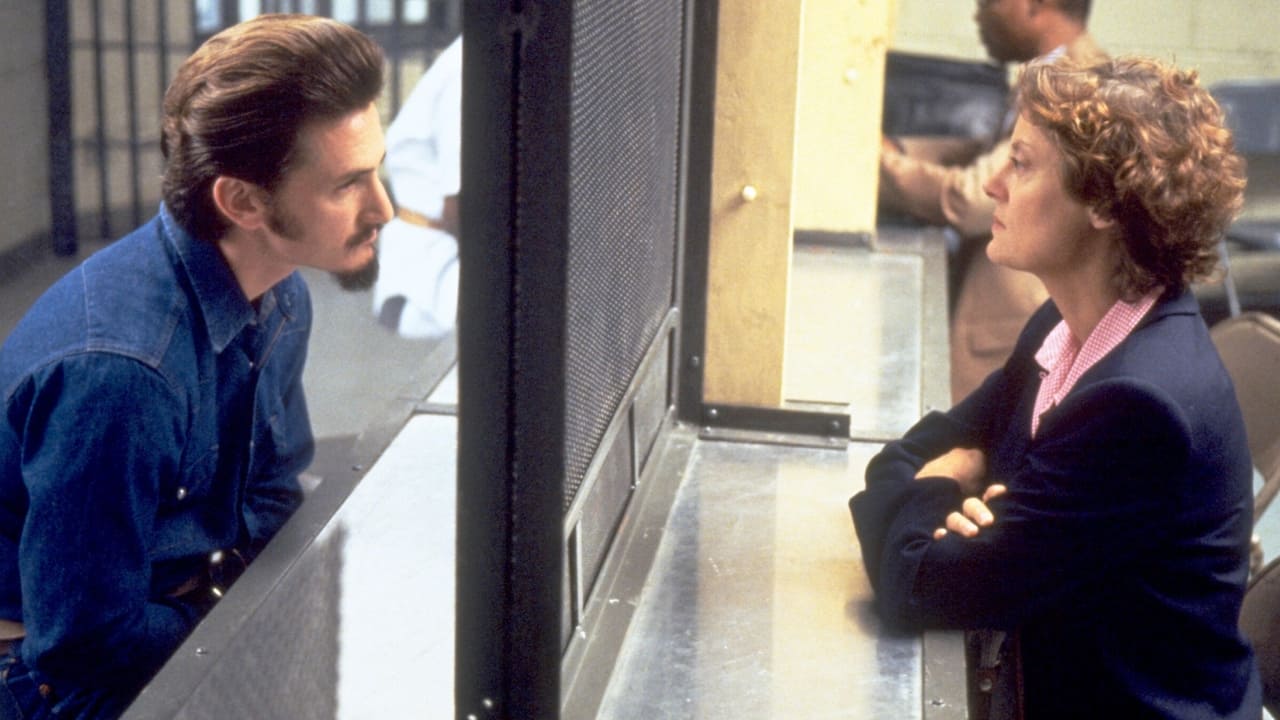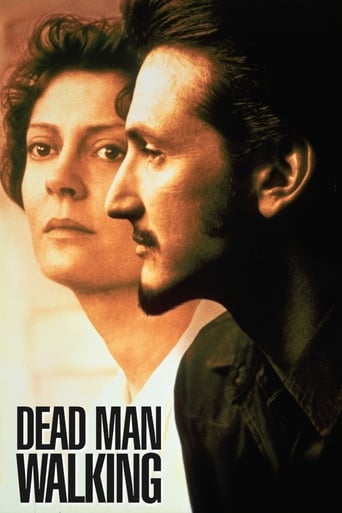

I can't help but admit that my personal feelings about the principals for this film, including director Tim Robbins, in a way influence my thoughts about the picture. However I will concede that throughout the movie, there was an even handed approach to balancing both sides of the capital punishment issue. For added poignancy, the parents of the victims of Matthew Poncelet (Sean Penn) are given their due, and Sister Prejean's (Susan Sarandon) efforts to understand both their feelings and those of Poncelet himself are to be commended. Both Penn and Sarandon offer competent portrayals of their characters, with Penn particularly effective. Though I'm no fan of either, I can still recognize that their efforts were noteworthy here. There wasn't much doubt in my mind that Poncelet was not wrongly convicted, and the closing moments of the story brought that home in frightening detail. What's interesting to me is that almost two decades after this film came out, Sean Penn appeared in 2003's "Mystic River", in which he portrays a father seeking vengeance for a daughter who is murdered , and in so doing, winds up killing his childhood best friend. That best friend in the story was portrayed by Tim Robbins.
... View MoreI admire any film that is brave enough to tackle controversial issues, but this film is one of a kind because it explores them in such a compelling fashion. The film pays little attention to the legal implications of the death penalty and instead focuses on the emotions behind it. Matthew Poncelet may be a murderer and a rapist, but this film dares to humanize him. And while the movie primarily focuses on him, it also explores the emotions of everyone involved: his family, the police, and even the parents of the teenager's Poncelet killed. One moment you're listening to the parents of the dead teenagers discuss the suffering they've endured, and then the next Matthew Poncelet is having difficulty walking away from his family for the last time. It makes your moral compass go haywire, but in the end it's necessary. I think the film's strongest elements are pacing and build-up. The movie begins with Poncelet on death row, and as it progresses, he tries to dodge his fate with the help of Sister Helen. Each time, however, Poncelet's proposed solutions fail, but he is quick to offer another before the viewer has given up completely. This constant 'push and pull' with the viewer mirrors Poncelet's mentality. Poncelet, because he fears the death penalty, has developed a sort of coping mechanism by latching on to these supposed solutions, being disappointed, and then moving on to the next thing. This format leads to a slow build-up as Poncelet runs out of options and viewers start to wonder if he will truly meet his fate. By the time Poncelet realizes he has no way out, the film has established a friendship between Helen and Poncelet, and viewers have gotten a glimpse into Poncelet's more favorable characteristics. This effectively causes the viewer to sympathize with Poncelet as they realize he's going to die. The most powerful scene of the film is certainly the execution scene. The somber music coupled with the slow march to the execution room as a cop shouts "Dead man walking!" are enough to put anyone on edge. Helen walks next to Poncelet and reads the Bible to him, while the policemen stare straight ahead with emotionless expressions. Even the nurse who helps administer the injection seems to be going through the motions. This helps to turn the viewer against the people who are administering the death penalty. The silence of the parents following Poncelet's apology on his deathbed makes the parents seem shallow. In the end, it seems as though the only people showing any emotion are Helen and Poncelet. Viewers can't help but feel sorry for Poncelet as he watches the lethal drugs enter his body, while Helen sits outside, her arm outstretched to show her support. Susan Sarandon and Sean Penn both give outstanding performances in this scene, and throughout the film. Perhaps the film is biased towards one side of the argument, but either way, it raises questions and prompts some much-needed soul-searching for anyone brave enough to watch it.
... View MoreAsked to visit a death row inmate, a middle aged nun finds herself unexpectedly bonding with the convict in question despite his heinous crimes in this well acted human drama starring Sean Penn and Susan Sarandon. The film is never particularly subtle with its anti-death penalty agenda and it harks on a bit too much about the ease of executing a monster (rather than human being) for its own good, however, the movie also offers a terrific character study in Sarandon's benevolent nun. Throughout the film, she is haunted by flashbacks of killing an animal in her youth and the guilt that she felt at the time, which she evidently equates with Penn's situation, convicted of killing two young lovers. As Sarandon later meets with the families of Penn's victims, the situation grows even more complex for her as she finds herself unable to escape their pain but also drawn to Penn. Solid as Sarandon is in the film though with her internally divided character, Penn shines even brighter here, especially with the changes in personality that he goes through towards the end as he sees his own end approaching. The use of close-ups on the equipment in his final scene is endlessly eerie. Director Tim Robbins also does a great job framing his two leads; there are some excellent shots of them conversing through glass panels with each other's reflection (in the glass) making it appear as if they are sitting side by side. On that note, the connection between the two protagonists here is incredibly strong - much more so than one might expect from two so vastly different human beings.
... View MoreFinally watched "Dead Man Walking". Performances outstanding but Penn tends to mumble and his words are lost several times even with re-winding the tape. The use of the cigarette and handcuffs as props are mood setting.The supporting cast is very very good... believable. Penn's family members are especially well done. Jack Black is there as a brother.Robbins focuses many close-ups on Sarandon's huge liquid eyes made more liquid by the events in the plot. The effects with the screens and bars in the visiting room are effective.All in all... it's worth a watch or a re-watch but not on a day when you are feeling at all "down".
... View More